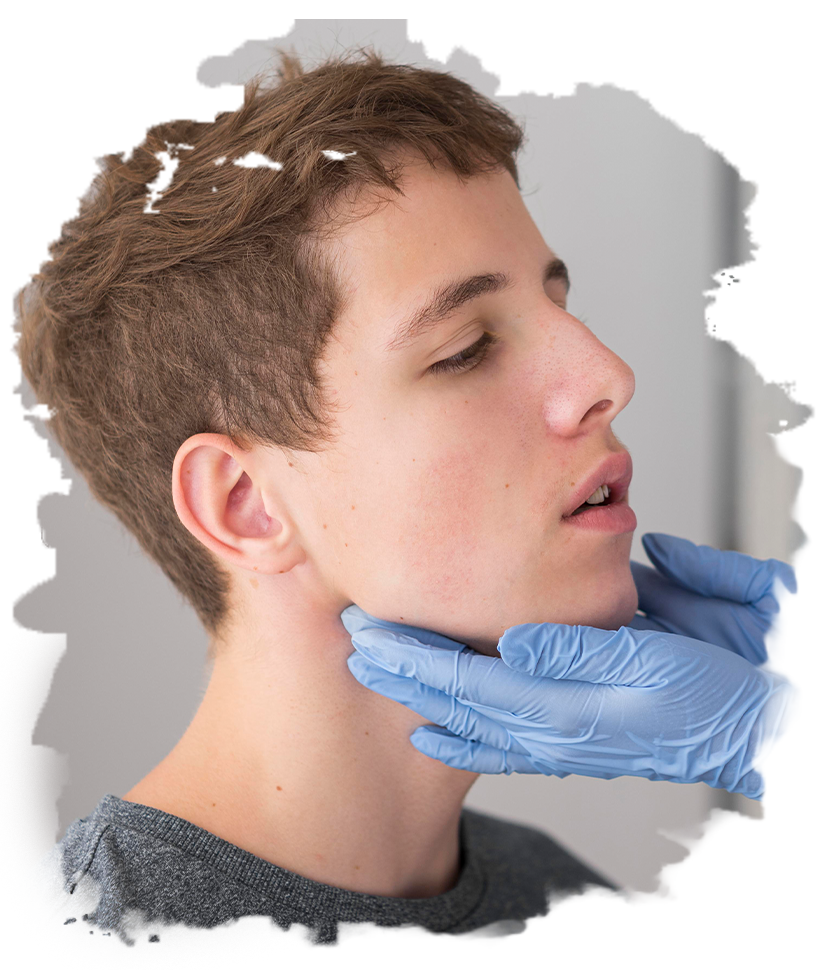Do Braces Correct Jaw Structure?
Orthodontic treatment is a method used to properly align the teeth and correct structural irregularities of the jaw. Braces can help resolve various jaw-related issues. Imbalances in jaw structure can lead to both aesthetic concerns and functional problems. With orthodontic treatment, issues such as jaw protrusion, underdevelopment, or narrowing can be corrected, resulting in a more harmonious jaw alignment.
Braces help position the teeth and jaw correctly.
In cases such as upper jaw protrusion or lower jaw retrusion, braces can bring the jaw structure into a proper position. Similarly, jaw narrowing issues can also be treated with braces. Orthodontic treatment improves jaw relationships, provides a more balanced smile aesthetically, and positively affects temporomandibular joint (TMJ) health.
Contact Form
Get Detailed Information!
Upper Jaw Protrusion and Braces
Upper jaw protrusion occurs when the jaw extends forward beyond normal. This may cause aesthetic concerns and chewing difficulties. Braces are an effective way to treat upper jaw protrusion.
- Braces correct upper jaw protrusion.
- They gently push the jaw backward to ensure proper positioning.
- Regular adjustments during treatment help improve jaw alignment.

Lower Jaw Retrusion and Braces
Lower jaw retrusion results from underdevelopment or imbalance in the jaw. It can lead to aesthetic problems, difficulty chewing, and TMJ disorders. Braces provide an effective solution to lower jaw retrusion.
- Braces correct the retruded lower jaw and improve structure.
- They stimulate jaw growth and guide it to the proper position.
- Mechanical tools and appliances help reposition the jaw effectively.
Treating Jaw Narrowing with Braces
Jaw narrowing refers to an insufficient width between the upper and lower jaws. This misalignment affects tooth positioning and jaw function. Braces are a reliable method for correcting jaw narrowing.
- Braces help widen the jaw structure.
- They align both jaws and bring teeth into proper position.
- Regular adjustments during treatment address the narrowing issue.
"Braces treatment not only provides an aesthetic smile but also corrects jaw irregularities and supports overall oral health."

Types of Braces for Jaw Correction
Types of Braces for Jaw Correction
Several types of braces are available to correct jaw alignment. The right type is chosen based on individual needs and preferences.
- Metal Braces: The most commonly used type. Metal brackets are fixed to the teeth and connected with wires to apply pressure for jaw correction.
- Ceramic Braces: Function similarly to metal braces but have tooth-colored or clear brackets, making them less visible.
- Clear Aligners: Transparent, custom-made trays that can also help correct jaw and tooth alignment—ideal for patients with aesthetic concerns.
Other Ways to Maintain Jaw Alignment After Braces
To preserve jaw structure after orthodontic treatment, the following methods are recommended:
- Good Oral Hygiene: Brushing and flossing regularly removes plaque buildup that can affect tooth positioning.
- Healthy Nutrition: A diet rich in calcium and vitamin D supports strong teeth and jawbones.
- Avoid Harmful Habits: Teeth grinding and nail-biting can damage jaw structure.
- Regular Dental Check-ups: Visiting the dentist helps detect alignment issues early.
- Proper Posture: Maintaining a straight posture can prevent strain on jaw muscles and misalignment.
Duration and Progress of Braces Treatment
The duration of orthodontic treatment varies depending on individual needs and the treatment plan. Typically, braces are worn for 12 to 36 months. The exact period depends on the severity of misalignment, jaw irregularities, and the patient’s age.
Regular orthodontic check-ups and adjustments are essential. Depending on tooth movement speed, the treatment may take shorter or longer. Patient compliance and oral hygiene significantly affect treatment success.
Retainer Use After Braces
To make orthodontic results permanent, retainers are required after braces. Retainers help maintain the new tooth and jaw positions. The usage duration depends on individual needs and orthodontist recommendations. Usually, they are worn all day for the first 6 months, then only at night.
Types of Retainers:
There are two main types of retainers:
- Hawley Retainer: A removable retainer made of acrylic and metal, custom-fitted to the jaw structure and easy to clean at regular intervals.
- Essix Retainer: An aesthetic retainer made of clear plastic that fully covers the teeth. It is typically suitable for nighttime use.
Important Retainer Notes:
Retainers must be worn exactly as prescribed. Otherwise, teeth may shift back to their original position. Retainers should be cleaned regularly to prevent plaque buildup, which could reduce their effectiveness.

Frequently Asked Questions
You can take a look at the common questions asked by our patients and contact us for all other questions you are curious about.
Usually between 12 to 36 months, depending on the condition of the teeth and jaw.
Mild pain, mouth irritation, and tooth sensitivity may occur but typically subside during the course of treatment.
Eating can be difficult at first, and braces may cause minor discomfort. These issues tend to improve as you get used to them.
Most jaw issues can be corrected with braces, but severe cases might require surgical intervention.
Some mild pain may be felt for a few days as your teeth and jaw adjust to the new alignment.
To keep teeth in their corrected positions. Retainers are generally worn full-time for the first 6 months, then only at night.
Yes. Properly aligned teeth can enhance your appearance and boost your confidence.
Avoid hard, sticky, and sugary foods as they can damage braces or promote plaque. Opt for soft, nutritious meals.

